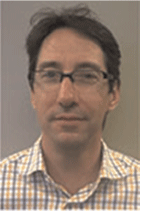Improving fracture initiation and potential impact on fracture coverage by implementing optimal well-planning and drilling methods for typical stress conditions in the Cooper Basin, central Australia
Raymond JohnsonA Unconventional Reservoir Solutions.
B The University of Adelaide.
C CSIRO.
D Ikon Science.
E Petro-King International.
The APPEA Journal 55(2) 403-403 https://doi.org/10.1071/AJ14038
Published: 2015
Abstract
Drilling conditions involving high mean and deviatory stresses, and natural fractures in the Cooper Basin present challenges in drilling and introduce wellbore rugosities, leaving a damaged wellbore subject to a stress cage effect. Fracture initiations have been problematic in vertical Cooper Basin wells, exhibiting high initiation and treating pressure frac treatments, and with high stress conditions posing greater risks in non-vertical completions. While far-field fracture complexity should be simplified, the near wellbore complexity results in reduced fracture conductivity. The authors believe that present drilling practices and wellbore azimuths may be contributing to sub-optimal hydraulic fracture initiations and complexities.
Present analytical modelling methodologies can derive initiation pressures for circular wellbores, but require more complex numerical models to include flaws and ellipticity to represent natural fractures and wellbore rugosities. This study compares initiation pressures and presents graphical results, comparing circular and elliptical wellbore cases with flaws. This extended abstract outlines the criteria used in these models and remarks on areas needing further research and model development.
The authors also propose improved drilling techniques to achieve more stable, smoother wellbores, potentially reducing some rugosity and drilling induced fractures. By using data from recent research and other cases with complex stress environments, it is proposed that initiation pressures might be reduced by inclining wells for hydraulic fracturing treatments in a favourable alignment in the maximum horizontal stress direction (σH-Max), and implementing completion techniques that aid better fracture initiation.

Raymond (Ray) Johnson, Jr. is a principal at Unconventional Reservoir Solutions, adjunct associate professor at the University of Adelaide and adjunct fellow at the University of Queensland. He has a PhD in mining engineering, an MSc in petroleum engineering, a graduate diploma in information technology and a BA in chemistry. Ray has been active in the SPE, he is a past chair of the SPE Queensland Section, 2013 co-chair of the SPE Unconventional Reservoir Conference and Exhibition Asia Pacific and he will be the 2015 co-chair of the SPE Unconventional Reservoir Conference and Exhibition Asia Pacific. Member: SPE, PESA, SPWLA, ISRM, AusIMM. |

Dr Hani Abul Khair received his BSc in Earth and environmental sciences, his MSc sedimentology and his PhD in petroleum geosciences at the University of Jordan, Jordan. In 2008, he worked as a petroleum geoscientist with Target Exploration UK, before taking a post-doctoral position at the University of Jordan. In 2010, he joined the Australian School of Petroleum as a research associate focused on a shale gas project funded by the Primary Industries and Resources SA (PIRSA). In 2011, he started working with the South Australian Centre for Geothermal Energy Resources on a project that involved geomechanics and fractures in deep shale horizons. |

Dr Rob Jeffrey holds a PhD in geological engineering from the University of Arizona. Before joining CSIRO in 1989, he was employed by Dowell Schlumberger, working on hydraulic fracturing and specifically fracturing of coalbed methane wells. He continued with his research interest at CSIRO and has run a range of projects investigating hydraulic fracture mechanics in coal and in naturally fractured rocks. Rob was instrumental in introducing hydraulic fracturing to the mining industry for cave-inducement and preconditioning of rock masses; this technology is now being used at mines in Australia and Chile. Rob is presently the leader of the hydraulic fracturing team at CSIRO in Melbourne. Member: SPE, American Rock Mechanical Association (ARMA). |

Dr Jeremy Meyer completed his BSc, majoring in applied mathematics and physics before completing his PhD in geomechanics as part of the Stress Group at the University of Adelaide. After initial work at the Australian School of Petroleum, Jeremy formed JRS Petroleum Research Pty Ltd, which is now part of Ikon Science, where he is Senior Vice President of geomechanics. He has spent the last 15 years working as a geomechanics and image log specialist throughout the Australasian region in a variety of sectors, including conventional oil and gas, coal seam gas, geothermal energy and CO2 sequestration. Member: SPE, PESA, AAPG. |

Ms Carly Stark is the well-stimulation leader for Petro-King Australia, an independent China-based oil and gas technology company. She is responsible for leading well-stimulation capability projects for the production enhancement team in the Australasian region. She graduated with honours in petroleum and chemical engineering from the University of Adelaide and has previously held roles at Schlumberger and National Oilwell Varco, where she worked in the well services and downhole divisions. Her primary focus was centred on hydraulic fracturing in coalbed methane applications and drilling in Central Australia. Member: SPE. |

Mr James Tauchnitz is the country manager for Petro-King Australia, an independent China-based oil and gas technology company. He is responsible for Petro-King’s operations from well-planning, drilling, stimulations, completions and operations in Australasia. James graduated from the University of Adelaide with honours in petroleum and chemical engineering and has previously held a number of technical and management positions for Arrow Energy (Shell and China National Petroleum Corporation JV), APLNG (Origin, ConocoPhillips, Sinopec JV) and BHP Billiton. Most recently, he was the well factory manager for Arrow Energy, where he managed project management and stakeholder engagement responsibilities for the Daandine Expansion Project. Member: SPE, AMICDA. |
References
Belytschko, T., and Black, T. (1999). Elastic crack growth in finite elements with minimal remeshing. International Journal for Numerical Methods in Engineering 45, 601–20.Brudy, M., and Zoback, M.D. (1999). Drilling-induced tensile wall-fractures: implications for determination of in-situ stress orientation and magnitude International Journal of Rock Mechanics and Mining Sciences 36, 191–215.
Durant, R., Woodroof, R.A., Stephens, T., Thom, W., Mcgowan, J.M., and Scott, M.P., 2013—Investigating Hydraulic Fracturing in Tight Gas Sand and Shale Gas Reservoirs in the Cooper Basin. Society of Petroleum Engineers Unconventional Resources Conference and Exhibition-Asia Pacific, Brisbane, Australia, 11–13 November, SPE-167073-MS.
Fuenkajorn, K., and Daemen, J.J.K. (1992). Drilling-Induced Fractures in Borehole Walls. Journal of Petroleum Technology 44, 1–7.
Ganga, H.V.S., Advani, S.H., Chang, P., Lee, S.C., and Dean, C.S., 1979—In-Situ Stress Determination Based On Fracture Responses Associated With Coring Operations. The 20th U.S. Symposium on Rock Mechanics (USRMS), Austin, Texas, 4–6 June, ARMA-79-0683.
Jeffrey, R.G., and Zhang, X., 2010—Mechanics of Hydraulic Fracture Growth From a Borehole. Canadian Unconventional Resources and International Petroleum Conference, Calgary, Canada, 19–21 October, SPE 137393.
Johnson, R.L. Jr., AW, K.P., Ball, D., and Willis, M., 2002—Completion, Perforating and Hydraulic Fracturing Design Changes Yield Success in an Area of Problematic Frac Placement - the Cooper Basin, Australia. The Society of Petroleum Engineers Asia Pacific Oil and Gas Conference and Exhibition, Melbourne, Australia. 8–10 October, SPE 77906.
Johnson, R.L. Jr., Scott, M., Jeffrey, R.G., Chen, Z.Y., Bennett, L., Vandenborn, C., and Tcherkasnev, S., 2010—Evaluating Hydraulic Fracture Effectiveness in a Coal Seam Gas Reservoir from Surface Tiltmeter and Microseismic Monitoring. The Society of Petroleum Engineers Annual Technical Conference and Exhibition, Florence, Italy. 19–22 September, SPE 133063.
Lorenz, J.C., and Finley, S.J., 1988—Significance of Drilling and Coring Induced Fractures in Mesaverde Core. SAND88-1623. Northwestern Colorado: Sandia National Laboratories.
Megorden, M.P., Jiang, H., and Bentley, P.J.D., 2013—Improving Hydraulic Fracture Geometry by Directional Drilling in Coal Seam Gas Formation. The Society of Petroleum Engineers Unconventional Resources Conference and Exhibition-Asia Pacific, Brisbane, Australia, 11–13 November, SPE 167053.
Pitkin, M.C., Wadham, T.H., Mcgowen, J.M. and Thom, W.W., 2012—Taking the First Steps: Stimulating the Nappamerri Trough Resource Play. The Society of Petroleum Engineers Asia Pacific Oil and Gas Conference and Exhibition, Perth, Australia, 22–24 October, SPE 160307.
Reynolds, S.D., Mildren, S.D., Hillis, R.R., and Meyer, J.J. (2006). Constraining stress magnitudes using petroleum exploration data in the Cooper–Eromanga Basins, Australia. Tectonophysics 415, 123–40.


